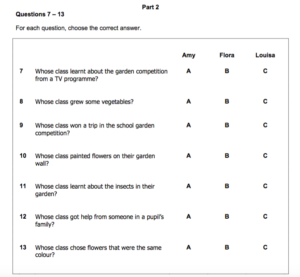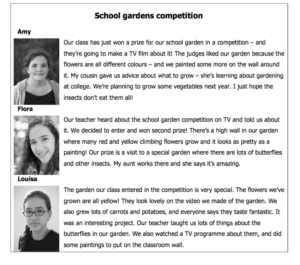About 2020 A2 Key Reading Part 2
In this post, I’m going to analyse Part 2 of the A2 Key Reading and Writing Test. It follows on from one of my previous posts where I wrote about Part 1 of the A2 Key Reading and Writing Test.
I would say that this is one of my favourite parts of the Test.
I like the task (finding matches for all parts of the information you are looking for).
I like the kind of skills it will help our students develop (e.g. recognising paraphrasing, working out why a wrong option might be tempting,..)
I like the short texts on a similar subject.
And I think it can lend itself to some fun, interactive, cooperative classroom activities! (My next post will share some of those!)
So, let’s get down to some analysis of this task.
I’ve taken the sample task from the 2020 A2 Key for Schools Handbook, available here: https://www.cambridgeenglish.org/images/515230-a2-key-for-schools-handbook-2020.zip
The images are shots of the two pages for the task.
Let’s look at what’s involved
You can see that there are seven questions to answer. And three texts on the same subject – a School Gardens Competition.
This part asks students to read the texts quickly and locate specific information and then to read carefully to understand detail.
Tip: One important thing to notice is that, in this Part, the questions appear first, on the left-hand page. The text appears second, on the right-hand page.
When this happens in the Cambridge Assessment English Reading tasks, it indicates that rather than reading the texts first, students should first look at the questions.
Tip: They can’t remember all of the questions obviously, so I would suggest that they look at the first one or two only.
Now although the questions look quite simple, there are always two, or three important details to note.
To illustrate this, I’ve numbered the details in each question that students have to find a match for in the texts. I’ve used a different colour for each question.
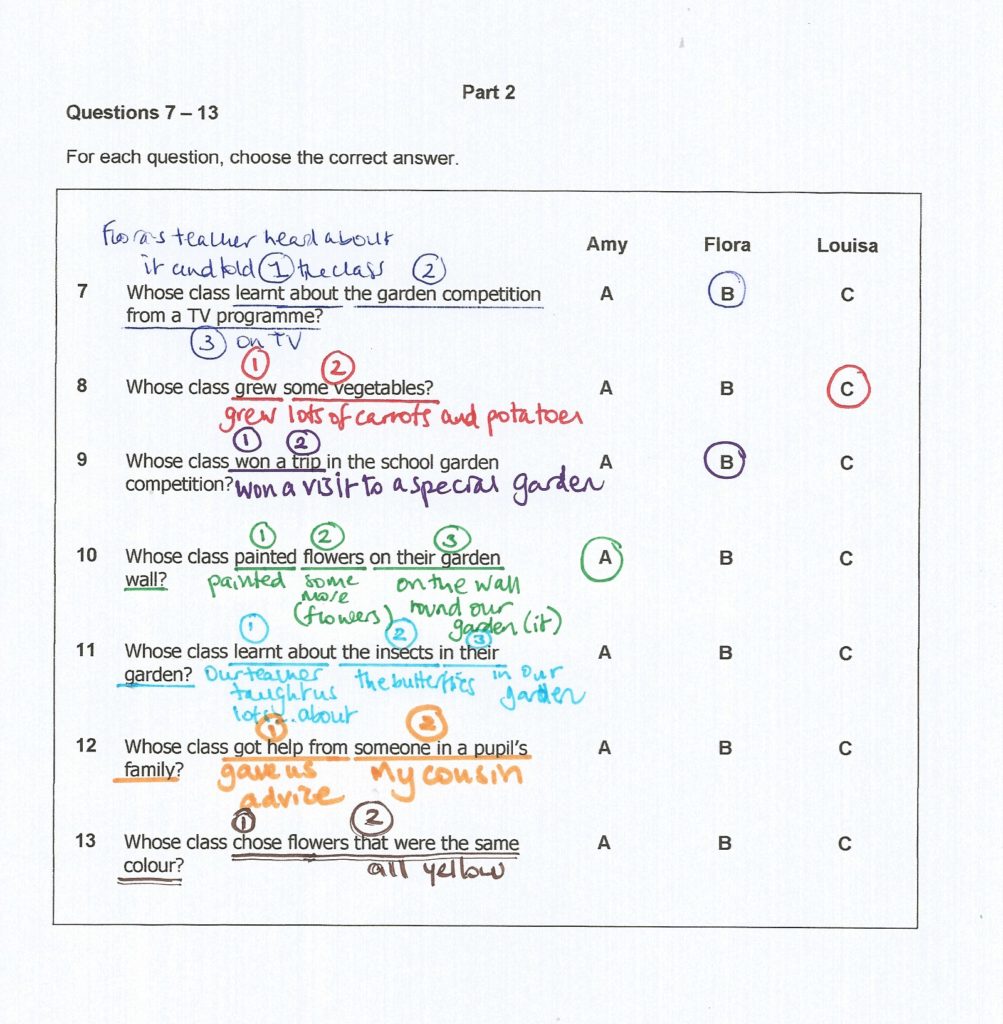
You can see that for question 1, I’ve highlighted and numbered three things: 1 learnt about 2 the garden competition 3 from a TV programme.
Now, look at the notes I’ve written on the texts:
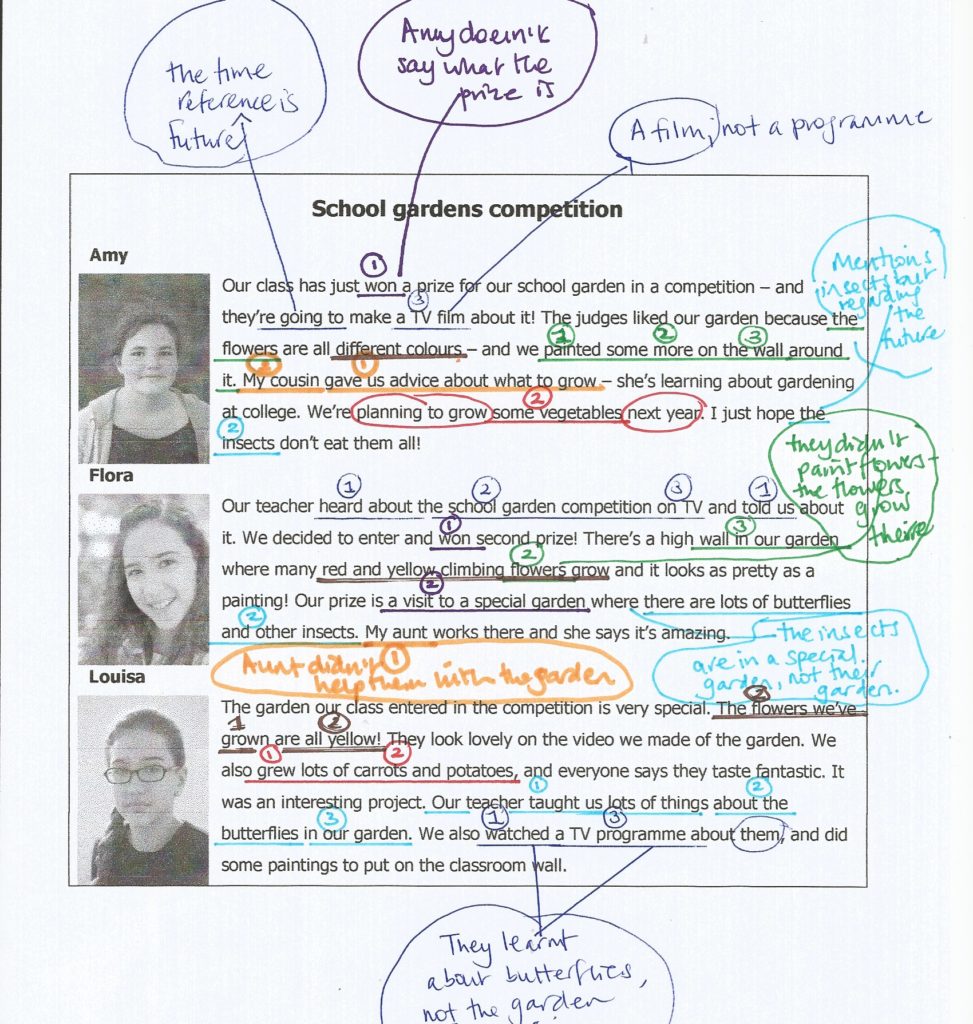
You can see that for question 1 (in blue), I’ve found matches in all three texts.
Amy mentions 3 TV, but talks about a TV film, not a programme. And she says that they are going to make a TV film, so the time reference isn’t right (and the TV film will be about their garden, not the competition). So, no real matches here at all.
Flora writes that her teacher heard about the school garden competition on TV and told the class about it.
Here, we have a match with 1 learnt about (the teacher watched the TV programme then told them), 2 the garden competition AND 3 from a TV programme All three matches!
Louisa also mentions watching a TV programme, so we have a match with 1 learnt about and 3 from a TV programme but the programme was about butterflies, not the garden competition. So only 2 matches out of 3.
For question 2, we have 2 things to find. 1 grew and 2 some vegetables.
Amy says they are planning to grow some vegetables next year. Wrong time reference – future, not past. Only one match.
There are no matches in Flora’s text.
And Louisa tells us that they also grew some carrots and potatoes. We have two matches so Louisa (C) is the right answer.
I’ll leave you to look through my other match analyses – *remember the different colours highlight the key details in the questions and in the texts.
And finally, just a reminder that although students can and SHOULD write on the question papers and make notes, underline matches, etc (if they’re doing a paper-based exam!), they must transfer their answers to the answer sheet.
For Part 2, the part where they record their answers looks like this:
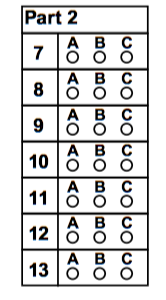
So, the key for this sample task should be 7 B, 8C, 9B, 10A, 11C, 12A, 13C
As usual, I hope you find my tips and insights useful and I’ll be back VERY soon with a post with some activities for this part.

